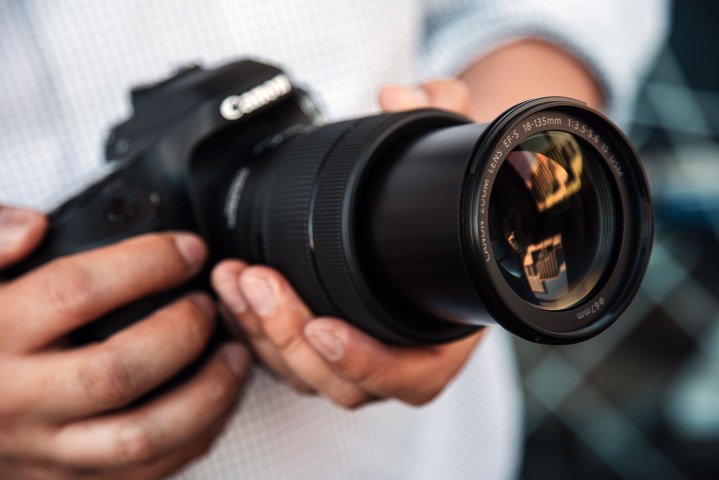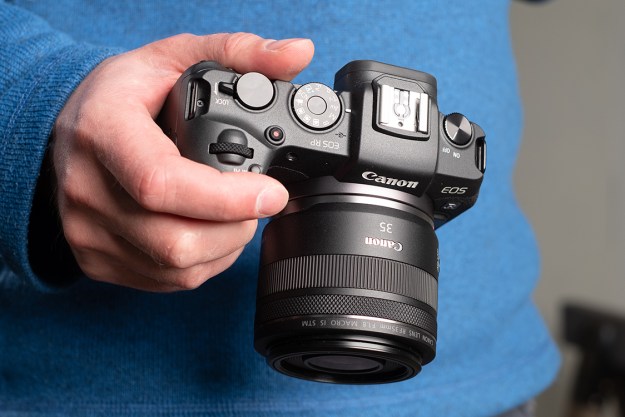
The Canon EOS 80D was released back in 2016. Three years later, Canon has decided it’s time for an upgrade, and the new EOS 90D brings many improved features, including a higher-resolution sensor. Both cameras fall into the midrange category, but they have plenty of capabilities that would suit the professional user. What does the 90D offer over the 80D, and is it worth the upgrade? Here’s how the two DSLRs compare.
Sensor
A major selling point of the 90D is the improved sensor compared to its predecessor. Both systems have an APS-C sensor, but Canon has added 8 megapixels to the 90D, bringing it 32.5. That makes the 90D the highest-resolution APS-C camera on the market. The increase in megapixels won’t benefit everyone, but it means more detail for large prints or additional freedom to crop.
The 90D also has a faster image processor with the new Digic 8, an improvement on the Digic 6 on the 80D.
- 1. Shot on Canon EOS 90D
- 2. Shot on Canon EOS 80D
Beyond resolution, the most significant advantage of the new sensor is the ISO range. The 90D is able to reach an expandable ISO of 51,200 which will certainly be of a benefit when shooting in low-light situations. The expandable ISO reach of 25,600 on the 80D is certainly nothing to turn your nose up at, but it is one stop behind the 90D. The metering sensor on the 90D is also upgraded, which should mean more accurate exposures. It now features a 220,000-pixel, RGB+IR metering sensor. In comparison, the 80D has a 7,560-pixel RGB+IR metering sensor.
Speed
The clear winner in terms of speed is the 90D. Its ability to continuously shoot ten frames per second (fps) in both RAW and JPEG when using the viewfinder, and 11 fps when in live-view, is a significant speed increase compared to the 7 fps on the 80D. When in live-view, the 80D offers a disappointing 5 fps continuous shooting.
Looking at shutter speeds and 90D again outperforms its predecessor thanks to a new electronic shutter, a feature borrowed from mirrorless cameras that is rare to see in a DSLR. The electronic shutter means users can enjoy shutter speeds of up to 1/16,000 second, twice the speed of the mechanical shutter, and thus twice the speed of the 80D.
Autofocus
Both cameras use Canon’s Dual Pixel Autofocus (DPAF) for fast live view focusing, and share a similar 45-point autofocus (AF) system for viewfinder shooting. The speed and accuracy of the AF on the 80D was already impressive, so there wasn’t much that Canon could add to improve it.
But, Canon did bring things up to speed in the 90D with its EOS iTR technology, which stands for Intelligent Tracking and Recognition. iTR uses the higher-resolution metering sensor to detect not just brightness, but also color in the scene, which allows the 90D to readily track subjects and keep them in focus. But more than that, the 90D is also capable of face-detection autofocus in the optical viewfinder. Face-detection is often reserved for mirrorless cameras or DSLRs in live-view mode, but the 90D’s ability to combine it with viewfinder shooting could be huge for portrait photographers.
Design
Side by side, there’s not anything noticeably different in the designs of these cameras. The 90D is slightly lighter, coming in at 24.7 ounces — one ounce under the 80D. Both cameras are weather-sealed, which will protect your kit against the harsher elements.
The LCD screen remains a strong selling point for this Canon series, especially for those who shoot vlogs. The three inch vari-angle touch screen on both cameras will give you more options with viewing perspective, helping you to get sharper stills and video. The touch screen feature is a bit of gimmick on a camera at this level — which has plenty of physical controls — but those who prefer a more digital experience should enjoy it.
Canon has added a joystick to the rear of the 90D, something that was lacking on the 80D. The joystick makes it much easier to select a focus point. The addition means the “Q” button is placed slightly lower on the 90D, and the delete button has found a new home at the bottom of the rear side of the camera. Other than that, everything remains the same on both cameras; the learning curve for those looking to upgrading is practically nil.
Battery
DSLRs remain a clear winner in the battery life department when up against Mirrorless systems. Both batteries on the 80D and 90D far outperform any flagship mirrorless camera. But when it comes to putting them both against each other, the 90D packs more juice into the LP-E6N battery. In real-world terms, the 90D gives you 1,300 shots from one full charge, compared to 960 on the 80D. Either one should have no trouble getting you through a full day of shooting.
But certain types of photographers will benefit from the 90D’s better battery life. Wedding photographers, for example, often shoot thousands of photos at one event, and the fewer times they stop to swap batteries, the fewer chances they have of missing a key shot. The 90D offers peace of mind in such situations.
Video
Canon has long been a popular choice for video shooters, and the EOS 5D Mark II is largely responsible for spearheading the DSLR (and, by extension, mirrorless) video revolution. Listening to the demand of videographers, Canon has added 4K/30p recording capabilities to the 90D. More impressively, it can shoot 4K from the full width of the sensor, whereas many previous
Full HD can now be shot at up to 120 fps, twice that of the 80D. That means even slower slow-motion video. Both the 80D and 90D have a recording limit of 29.59 minutes.
Is the Canon EOS 90D worth it?
With any upgrade in the camera world, the same question arises: Do you need it? For someone looking at their first DSLR, or their first Canon, the price difference between the two isn’t huge, and we’d probably recommend springing for the 90D. The 80D is currently $999 (body only) while the 90D is just $1,199 (body only).
But what about for current 80D owners? The decision here is not as clear cut, but for many photographers, there’s certainly enough in the 90D to warrant dipping into your bank account. The improved metering and subject tracking, face-detection AF, 4K video, and longer battery life are all major pluses. The new sensor in the 90D is undoubtedly desirable, but most shooters will not see clear benefits in day-to-day use (you should consider moving to a full-frame camera if improved image quality is what you’re after). If you shoot a lot of video, sports, or portraits, the 90D is worth it — but the 80D is otherwise a solid camera that will continue to serve you well.
Canon EOS 80D
Editors' Recommendations
- Nikon D750 vs. D780: 5 years in the making, Nikon’s newest proves its worth
- The Canon EOS Rebel T8i brings 4K to a $750 budget DSLR
- Nikon Z 50 vs. Canon EOS M6 Mark II: Nikon’s newest takes on Canon’s champ
- Canon’s EOS-1D X Mark III wants to squash mirrorless with 20 fps, 10-bit color
- 32-megapixel Canon EOS 90D and M6 Mark II set new bar for APS-C sensors








